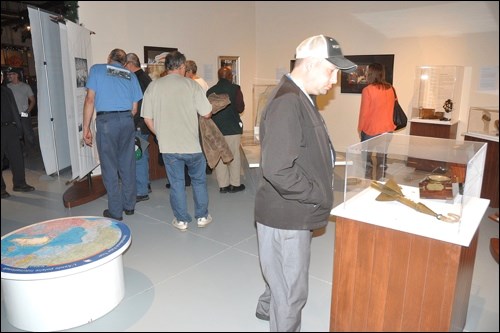The ill-fated expedition of Sir John Franklin and his crew in 1845 is the subject of a travelling exhibition making a stop in North Battleford.
The Western Development Museum is hosting Echoes in the Ice - Finding Franklin’s Ship, which opened Nov. 22 and runs to April 10 of next year.
The exhibit is a co-production of Gone West Productions and the Canada Science and Technology Museum in Ottawa, with the support of Natural Resources Canada and Parks Canada.
The WDM’s Saskatchewan branches are the first stop for the exhibition. It has already had runs at the Saskatoon and Moose Jaw museums.
The focus of the display is the recent discovery of the wreck of one of the Franklin Expedition ships, the HMS Erebus.
The ship had been one of two undertaking the exploration of the Northwest Passage through the Canadian North in 1845, the other being the HMS Terror.
However, the Erebus was stranded in ice near King William Island starting in September 1846, and lost contact with the rest of the outside world.
The stranded crew was able to survive, thanks in part to a backlog of three-years worth of food on board. However, the exhibit notes the food came from cans that were lined with lead and the belief is that many of the crew met their fate from lead poisoning.
Franklin himself passed away after a year. The remaining crew, in a last attempt at rescue, attempted to go inland from the Arctic south to an outpost 900 miles away.
In the end all 129 crew members from the expedition lost their lives.
The items on display, said David Gilbert, museum technician with the WDM, are “a mix of both new and old Arctic exploration.”
One set of items, including nails, buttons and a boot heel, were actual artifacts from Franklin’s crew.
Other items, including food canisters, also came from the crew. Nearby was the replica of a grave of one of the crew members whose body was later discovered pretty much preserved due to the cold conditions, and it was determined lead poisoning caused his death.
The rest of the items are more contemporary from 1850 on to help tell the story of the mystery surrounding the ship’s disappearance and how the technology of exploration has progressed over the years.
“The whole exhibit is basically to show not only how it was this process to find John Franklin’s crew and ship, but also just how the exploration has changed so dramatically over the years,” said Gilbert.
There were artifact examples of bear spray and bear alarms that would have been available during Franklin’s era. But there are also examples of how science has changed.
“You have solar power,” said Gilbert, and also “you have telephone access, so you can get out.”
But in 1845, there were no modern-day communications to speak of — no cellphones, or satellites, no radio. After a long period of time with no word from Franklin, people in England knew the crew was in big trouble and the search began.
It was in the fall of 2014 that the Erebus was finally discovered in a major archaeological find.
Officials with the Western Development Museum in North Battleford are excited to host the travelling exhibition, illustrated in remarks during the ceremonies opening the exhibit Tuesday afternoon at the museum.
Warren Clubb, research and library co-ordinator of the WDM Curatorial Centre based out of Saskatoon, said “the layout inside is absolutely terrific.”
“Travelling exhibits are important to our museum, they’re important to our communities because we’re able to bring in stories from different parts of Canada about different things,” said Clubb.
“We’re very pleased at the head office of the museum to be able to work with branch staff, our team in North Battleford, to bring you these travelling exhibits. This is one of many that will be here over the next few years.”



